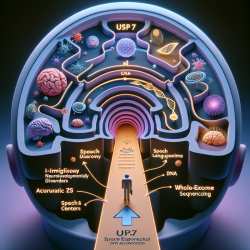Understanding the IST-3 Trial: A Data-Driven Approach to Stroke Treatment
The Third International Stroke Trial (IST-3) has significantly contributed to our understanding of thrombolysis in acute ischemic stroke. As a practitioner, integrating these findings into your practice can enhance patient outcomes. This blog will explore key insights from IST-3 and how they can be applied to improve therapeutic approaches.
Key Findings from the IST-3 Trial
The IST-3 trial was a large-scale, randomized study focusing on the use of intravenous recombinant tissue plasminogen activator (rt-PA) for acute ischemic stroke. The trial aimed to determine the efficacy of rt-PA administered within six hours of symptom onset. The study's design allowed for a detailed analysis of the treatment's effects on different patient subgroups, including those traditionally underrepresented in clinical trials, such as older adults.
Implementing IST-3 Outcomes in Practice
Here are several ways practitioners can apply the findings from IST-3:
- Expanding Treatment Windows: The trial demonstrated that rt-PA could be beneficial up to six hours post-stroke onset, challenging the traditional three-hour window. This expansion could allow more patients to receive potentially life-saving treatment.
- Inclusive Patient Criteria: IST-3 included patients over 80 years old, highlighting the importance of not excluding older adults from thrombolytic therapy. Practitioners should consider age as one of many factors rather than a disqualifying criterion.
- Time-Sensitive Treatment: The data reinforced the concept that "time is brain," emphasizing the need for rapid assessment and treatment initiation. Streamlining processes in emergency settings can reduce delays and improve outcomes.
Encouraging Further Research
While IST-3 provides valuable insights, it also underscores the need for ongoing research. Practitioners are encouraged to participate in further studies to refine thrombolytic therapy protocols and explore additional factors influencing treatment efficacy, such as genetic predispositions and comorbid conditions.
Conclusion
By integrating IST-3 findings into clinical practice, practitioners can make data-driven decisions that improve stroke treatment outcomes. The trial's insights into treatment windows, patient inclusivity, and the importance of timely intervention offer a framework for enhancing therapeutic strategies.
To read the original research paper, please follow this link: The third international stroke trial (IST-3) of thrombolysis for acute ischaemic stroke.










